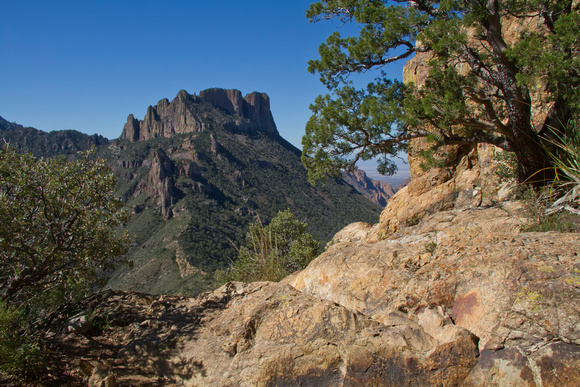Forums › Forums › Farktography General Chat › This week’s contest › 11-20-13 – High Dynamic Range Photography 4
- This topic has 22 replies, 9 voices, and was last updated 10 years, 5 months ago by
Elsinore.
-
AuthorPosts
-
November 21, 2013 at 8:58 pm #52460
 orionidParticipant
orionidParticipantCuda – That’s pretty. I think I actually like the non-HDR better.
CISS – I take the approach of bracketing conservatively. Disk space is almost free. If HDR even tickles the back of my brain, I’ll bracket and then only process if I can’t get the results I want without doing so.
Yugo/Bender – I went through the dirty phase. it was REALLY bad. Now I use it as a tool to overcome sensor limitations. Every once in a while I go full-bore (or so it seems), but then I look at things like the Seattle wharf I posted this week and realize even at WOT I’m not nearly as bad as I went back in the day.
November 21, 2013 at 9:25 pm #52461fluffybunny
ParticipantI just got done processing a bunch of stuff from our annual trip to Big Bend NP. I figured something out in doing so that seems relevant here,…
I almost never bracket and have never really played with HDR let alone fallen into the hole. I took several landscapes under less than ideal lighting conditions (bright overhead sun, clouds and/or blue sky) and was trying to find a way to improve them. Standard raw processing (“fill light”, exposure and so on) was either too dark in shadow, or blown out in the sky.
I’ve tried graduated ND filters in the field and I really don’t like the look. I’ve tried dodging and burning with limited success. I’ve tried masking with curves, exposure and so on which left artifacts (like “outlines” of mountains where the mask was). Still no joy.
Here’s the best I’ve got thus far. Start with a single under exposed (maybe 2-3 stops) RAW file (remember, I don’t generally bracket in the field and if I do it’s usually hand held so the HDR software has to do alignment trickery and with wide lenses this can lead to its own issues). Using your favorite RAW processor, make two more copies, one adjusted so that you like the sky and the other adjusted so that the shadows look better. None of the three will look good. Run them through an HDR tool and voila, no alignment issues, improved sky/shadows/mids.
This one is at the extreme of the technique:

This one doesn’t seem HDR’d to me at all but is greatly improved over the other techniques I generally use:

Somewhere betwixt:

I suppose that someone has already “invented” this or perhaps there’s an easier way, but it’s new for me.
November 22, 2013 at 1:54 am #52462CauseISaidSo
ParticipantCISS – I take the approach of bracketing conservatively. Disk space is almost free. If HDR even tickles the back of my brain, I’ll bracket and then only process if I can’t get the results I want without doing so.
That’s the problem – HDR never seems to tickle my brain when out shooting, only when I get back, look through the shots and say, “That’d be an awesome shot if I could’ve gotten everything properly exposed. I need to remember to do some bracketing shots next time.” But when next time comes…
I suppose that someone has already “invented” this or perhaps there’s an easier way, but it’s new for me.
The two HDR tools I’ve played with have a single-image HDR mode that I’m assuming does this (or at least something like it). I think it works by sliding the 8-bit output window into the RAW image’s 12 or 14 bits to create multiple versions of the image.
Nice saves on your example images, BTW.
November 22, 2013 at 2:50 am #52463Yugoboy
ParticipantI don’t know that it’s a “dirty” phase, nor do I think I spent more than 2 weeks in the HDR hole, but with all of the filters and processing power we already have with Photoshop, GIMP and the rest, when I want to do HDR, I want it thoroughly tone-mapped and obvious. I want the full craziness.
I wish I could do subtle, but it’s just not in my nature.
November 22, 2013 at 3:59 am #52464linguine
ParticipantEach of my shots were taken from a single raw file. Occasionally I shoot something knowing Im going to turn it into an hdr image, but usually its not until after I get it back on the computer that I decide hdr is the way to go.
November 22, 2013 at 3:34 pm #52465fluffybunny
ParticipantThe two HDR tools I’ve played with have a single-image HDR mode that I’m assuming does this (or at least something like it). I think it works by sliding the 8-bit output window into the RAW image’s 12 or 14 bits to create multiple versions of the image.
Nice saves on your example images, BTW.
Thanks. Might have to look into these tools to see if the result is similar, would save some workflow steps.
November 22, 2013 at 4:08 pm #52466Barracuda
ParticipantI shot bracketed a LOT when up in the mountains, but usually no more than +/- 1 EV, the bright light was playing some trickery with the exposure metering and I was doing it as much for ‘getting a shot within what I want’ as much as being able to do HDR. I find that the HDR in Nik HDR Efex looks more natural most of the time than what I was able to get from Photomatrix, though that was only after the week or so trials I was able to get before deciding to purchase.
I try very hard to stay on the ‘real’ side of the realism scale when processing while still bringing out the pop and wow from the image, which for some photos demand more than others. Recently I’ve been using Color Efex Pro 4 far more often than HDR to achieve the look and feel I want from the sky -vs- foreground that consistently feels more natural to me than using HDR. Using a combination of the Detail Extractor, Pro Contrast, and often the Reflector Efex filters with control points can help paint in the effect where you want it for a realistic yet appealing look. Case in point, my recent ‘fall colors along the rails’ shot which I discuss the process of here: http://jonpfischer.com/archives/510
November 24, 2013 at 3:17 pm #52467Elsinore
KeymasterCongrats to linguine this week!
-
AuthorPosts
- The topic ‘11-20-13 – High Dynamic Range Photography 4’ is closed to new replies.